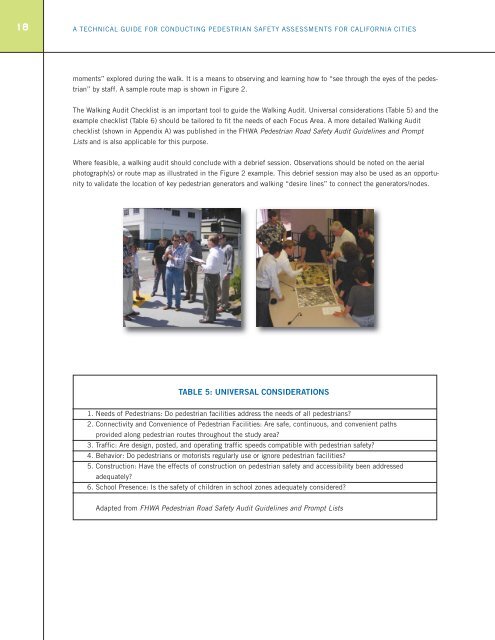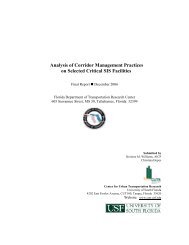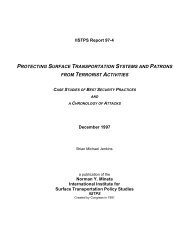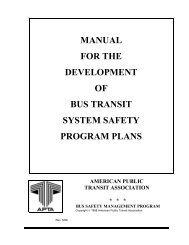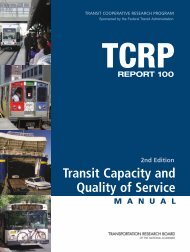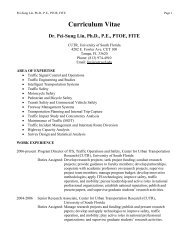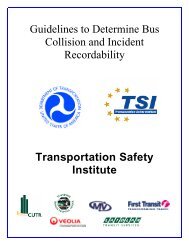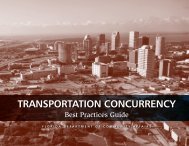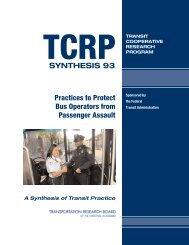a technical guide for conducting pedestrian safety assessments
a technical guide for conducting pedestrian safety assessments
a technical guide for conducting pedestrian safety assessments
You also want an ePaper? Increase the reach of your titles
YUMPU automatically turns print PDFs into web optimized ePapers that Google loves.
18 A TECHNICAL GUIDE FOR CONDUCTING PEDESTRIAN SAFETY ASSESSMENTS FOR CALIFORNIA CITIES<br />
moments” explored during the walk. It is a means to observing and learning how to “see through the eyes of the <strong>pedestrian</strong>”<br />
by staff. A sample route map is shown in Figure 2.<br />
The Walking Audit Checklist is an important tool to <strong>guide</strong> the Walking Audit. Universal considerations (Table 5) and the<br />
example checklist (Table 6) should be tailored to fit the needs of each Focus Area. A more detailed Walking Audit<br />
checklist (shown in Appendix A) was published in the FHWA Pedestrian Road Safety Audit Guidelines and Prompt<br />
Lists and is also applicable <strong>for</strong> this purpose.<br />
Where feasible, a walking audit should conclude with a debrief session. Observations should be noted on the aerial<br />
photograph(s) or route map as illustrated in the Figure 2 example. This debrief session may also be used as an opportunity<br />
to validate the location of key <strong>pedestrian</strong> generators and walking “desire lines” to connect the generators/nodes.<br />
TABLE 5: UNIVERSAL CONSIDERATIONS<br />
1. Needs of Pedestrians: Do <strong>pedestrian</strong> facilities address the needs of all <strong>pedestrian</strong>s?<br />
2. Connectivity and Convenience of Pedestrian Facilities: Are safe, continuous, and convenient paths<br />
provided along <strong>pedestrian</strong> routes throughout the study area?<br />
3. Traffic: Are design, posted, and operating traffic speeds compatible with <strong>pedestrian</strong> <strong>safety</strong>?<br />
4. Behavior: Do <strong>pedestrian</strong>s or motorists regularly use or ignore <strong>pedestrian</strong> facilities?<br />
5. Construction: Have the effects of construction on <strong>pedestrian</strong> <strong>safety</strong> and accessibility been addressed<br />
adequately?<br />
6. School Presence: Is the <strong>safety</strong> of children in school zones adequately considered?<br />
Adapted from FHWA Pedestrian Road Safety Audit Guidelines and Prompt Lists


